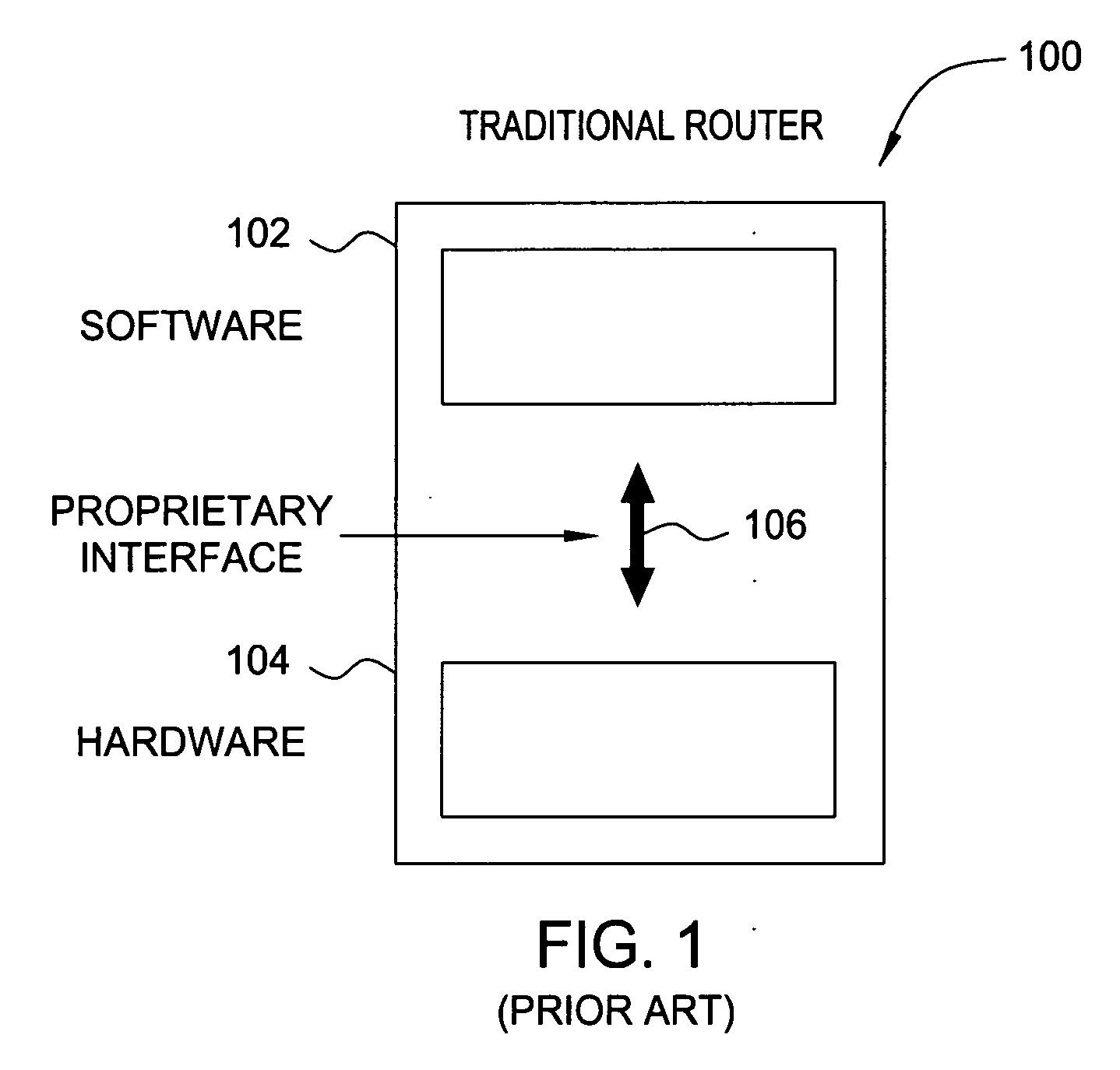Softrouter protocol disaggregation
a technology of softrouters and protocols, applied in the field of softrouter protocols, can solve the problems of increasing the complexity of the control plane at the router, and the complexity of the traditional router architectur
- Summary
- Abstract
- Description
- Claims
- Application Information
AI Technical Summary
Benefits of technology
Problems solved by technology
Method used
Image
Examples
experiment two
[0078] Experiment two studies the impact of link and node failures on the convergence time of the dynamic binding protocol. The link FE2b-FE4752 was first disconnected and reconnected. Upon disconnection, FE4742 discovered the link failure and adjusted its source routes with information propagated by FE3b 738. This information was then passed on to FE6722. After reconnection, FE4742 received shorter route information to CEs 402 on PCE2708 from FE2b 720 and propagated it to FE6722. Table 2 shows the source route convergence times.
TABLE 2Source route convergence times after failure (F) / recovery (R) eventsfor experiment two.FEEvent12a3a3b3c456Link(F)2.04.7Link(R)2.96.0Node(F)1.39.17.89.58.5Node(R)5.75.66.07.47.39.5
[0079] For node failure, the node FE1716 is stopped. Upon node failure, FE2a 718 and FE3a 736 discover first that FE1716 is down. They remove all source routes involving FE1716 and stop propagating such information. Their neighbors discover the invalid routes in the next pr...
experiment three
[0080] In experiment three, for the failover scenario, the CE3p 730 process is terminated, which causes a heartbeat timeout on FE3a 736, FE3b 738, and FE3c 740. Each FE 406 detects the timeout independently and switches to CE3b 746. The average time between the timeout and backup-CE activation is 0.8 s for FE3a 736, 1 s for FE3b 738, and 1.1 s for FE3c 740.
[0081] While the dynamic binding is taking place in the background upon link or CE / FE failures, forwarding still takes place in the network based on FIBs installed by the corresponding managing-CEs. When fault detection by higher layer routing protocols, such as OSPF is not instantaneous, the convergence times achieved by the dynamic binding protocol are smaller than the convergence times of higher layer routing protocols. Thus, the dynamic binding protocol does not have a detrimental effect on the rest of the network routing behavior in most cases.
[0082] Various embodiments of the present invention address the following technic...
PUM
 Login to View More
Login to View More Abstract
Description
Claims
Application Information
 Login to View More
Login to View More - R&D
- Intellectual Property
- Life Sciences
- Materials
- Tech Scout
- Unparalleled Data Quality
- Higher Quality Content
- 60% Fewer Hallucinations
Browse by: Latest US Patents, China's latest patents, Technical Efficacy Thesaurus, Application Domain, Technology Topic, Popular Technical Reports.
© 2025 PatSnap. All rights reserved.Legal|Privacy policy|Modern Slavery Act Transparency Statement|Sitemap|About US| Contact US: help@patsnap.com



